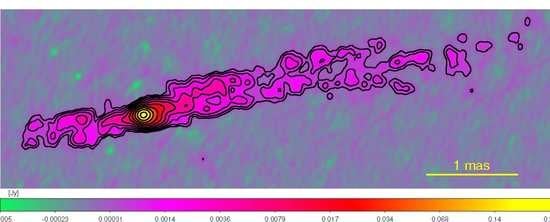The Disk-Driven Jet of Cygnus A
Abstract
:1. Introduction
2. Results
2.1. Kinematic Structure
2.2. Jet Shape
2.3. Size of the Jet Base
3. Discussion
Acknowledgments
Author Contributions
Conflicts of Interest
References
- Vlahakis, N.; Königl, A. Magnetic Driving of Relativistic Outflows in Active Galactic Nuclei. I. Interpretation of Parsec-Scale Accelerations. Astrophys. J. 2004, 605, 656–661. [Google Scholar] [CrossRef]
- Lyubarsky, Y. Asymptotic Structure of Poynting-Dominated Jets. Astrophys. J. 2009, 698, 1570–1589. [Google Scholar] [CrossRef]
- McKinney, J.C. General relativistic magnetohydrodynamic simulations of the jet formation and large-scale propagation from black hole accretion systems. Mon. Not. R. Astron. Soc. 2006, 368, 1561–1582. [Google Scholar] [CrossRef]
- Komissarov, S.S.; Barkov, M.V.; Vlahakis, N.; Königl, A. Magnetic acceleration of relativistic active galactic nucleus jets. Mon. Not. R. Astron. Soc. 2007, 380, 51–70. [Google Scholar] [CrossRef]
- Marscher, A.P.; Jorstad, S.G.; D’Arcangelo, F.D.; Smith, P.S.; Williams, G.G.; Larionov, V.M.; Oh, H.; Olmstead, A.R.; Aller, M.F.; Aller, H.D.; et al. The inner jet of an active galactic nucleus as revealed by a radio-to-γ-ray outburst. Nature 2008, 452, 966–969. [Google Scholar] [CrossRef] [PubMed]
- Homan, D.C.; Kovalev, Y.Y.; Lister, M.L.; Ros, E.; Kellermann, K.I.; Cohen, M.H.; Vermeulen, R.C.; Zensus, J.A.; Kadler, M. Intrinsic Brightness Temperatures of AGN Jets. Astrophys. J. Lett. 2006, 642, L115–L118. [Google Scholar] [CrossRef]
- Sikora, M.; Begelman, M.C.; Madejski, G.M.; Lasota, J.P. Are Quasar Jets Dominated by Poynting Flux? Astrophys. J. 2005, 625, 72–77. [Google Scholar] [CrossRef]
- Marscher, A.P. Astrophysics: Broad escape from the abyss. Nature 2011, 477, 164–165. [Google Scholar] [CrossRef] [PubMed]
- Hada, K.; Doi, A.; Kino, M.; Nagai, H.; Hagiwara, Y.; Kawaguchi, N. An origin of the radio jet in M87 at the location of the central black hole. Nature 2011, 477, 185–187. [Google Scholar] [CrossRef] [PubMed]
- Baczko, A.K.; Schulz, R.; Kadler, M.; Ros, E.; Perucho, M.; Krichbaum, T.P.; Böck, M.; Bremer, M.; Grossberger, C.; Lindqvist, M.; et al. A Highly Magnetized Twin-Jet Base Pinpoints a Supermassive Black Hole. Astron. Astrophys. 2016, 593, A47. [Google Scholar] [CrossRef]
- Blandford, R.D.; Payne, D.G. Hydromagnetic flows from accretion discs and the production of radio jets. Mon. Not. R. Astron. Soc. 1982, 199, 883–903. [Google Scholar] [CrossRef]
- Blandford, R.D.; Znajek, R.L. Electromagnetic extraction of energy from Kerr black holes. Mon. Not. R. Astron. Soc. 1977, 179, 433–456. [Google Scholar] [CrossRef]
- Doeleman, S.S.; Fish, V.L.; Schenck, D.E.; Beaudoin, C.; Blundell, R.; Bower, G.C.; Broderick, A.E.; Chamberlin, R.; Freund, R.; Friberg, P.; et al. Jet-Launching Structure Resolved Near the Supermassive Black Hole in M87. Science 2012, 338, 355–358. [Google Scholar] [CrossRef] [PubMed]
- Boccardi, B.; Krichbaum, T.P.; Bach, U.; Mertens, F.; Ros, E.; Alef, W.; Zensus, J.A. The stratified two-sided jet of Cygnus A. Acceleration and collimation. Astron. Astrophys. 2016, 585, A33. [Google Scholar] [CrossRef]
- Boccardi, B.; Krichbaum, T.P.; Bach, U.; Bremer, M.; Zensus, J.A. First 3 mm-VLBI imaging of the two-sided jet in Cygnus A. Zooming into the launching region. Astron. Astrophys. 2016, 588, L9. [Google Scholar] [CrossRef]
- Tadhunter, C.; Marconi, A.; Axon, D.; Wills, K.; Robinson, T.G.; Jackson, N. Spectroscopy of the near-nuclear regions of Cygnus A: Estimating the mass of the supermassive black hole. Mon. Not. R. Astron. Soc. 2003, 342, 861–875. [Google Scholar] [CrossRef]
- Bach, U.; Krichbaum, T.P.; Middelberg, E.; Alef, W.; Zensus, A.J. Resolving the jet in Cygnus A. Proceedings of The 9th European VLBI Network Symposium on The role of VLBI in the Golden Age for Radio Astronomy and EVN Users Meeting, Bologna, Italy, 23–26 September 2008; p. 108. [Google Scholar]
- Spruit, H.C.; Foglizzo, T.; Stehle, R. Collimation of magnetically driven jets from accretion discs. Mon. Not. R. Astron. Soc. 1997, 288, 333–342. [Google Scholar] [CrossRef]
- Asada, K.; Nakamura, M. The Structure of the M87 Jet: A Transition from Parabolic to Conical Streamlines. Astrophys. J. Lett. 2012, 745, L28. [Google Scholar] [CrossRef]
- Carilli, C.L.; Bartel, N.; Linfield, R.P. VLBI observations of the nuclear jet in Cygnus A. Astron. J. 1991, 102, 1691–1695. [Google Scholar] [CrossRef]
- Lobanov, A.P. Resolution limits in astronomical images. arXiv, 2005; arXiv:astro-ph/0503225. [Google Scholar]
- Ghisellini, G.; Tavecchio, F.; Maraschi, L.; Celotti, A.; Sbarrato, T. The power of relativistic jets is larger than the luminosity of their accretion disks. Nature 2014, 515, 376–378. [Google Scholar] [CrossRef] [PubMed]
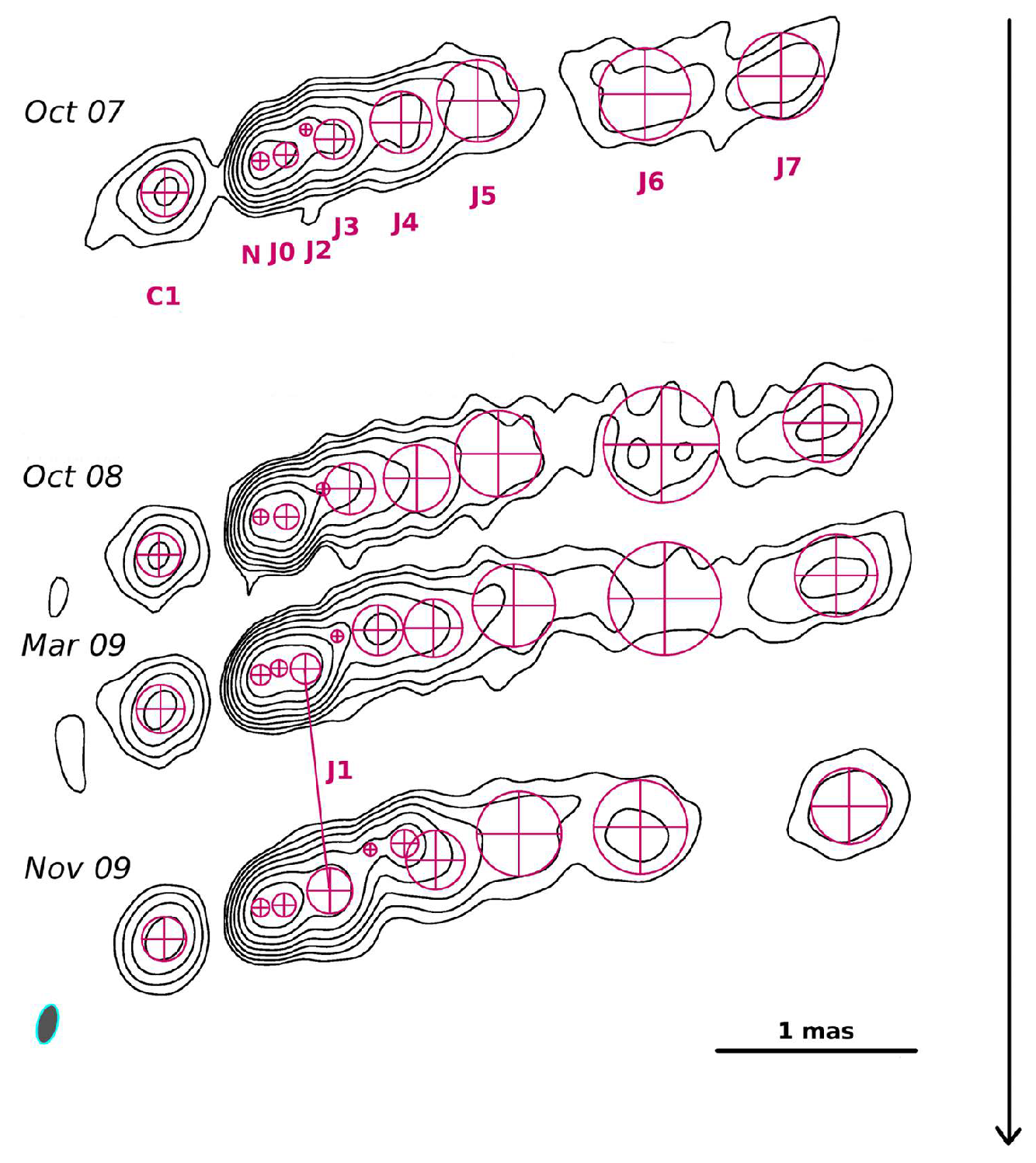
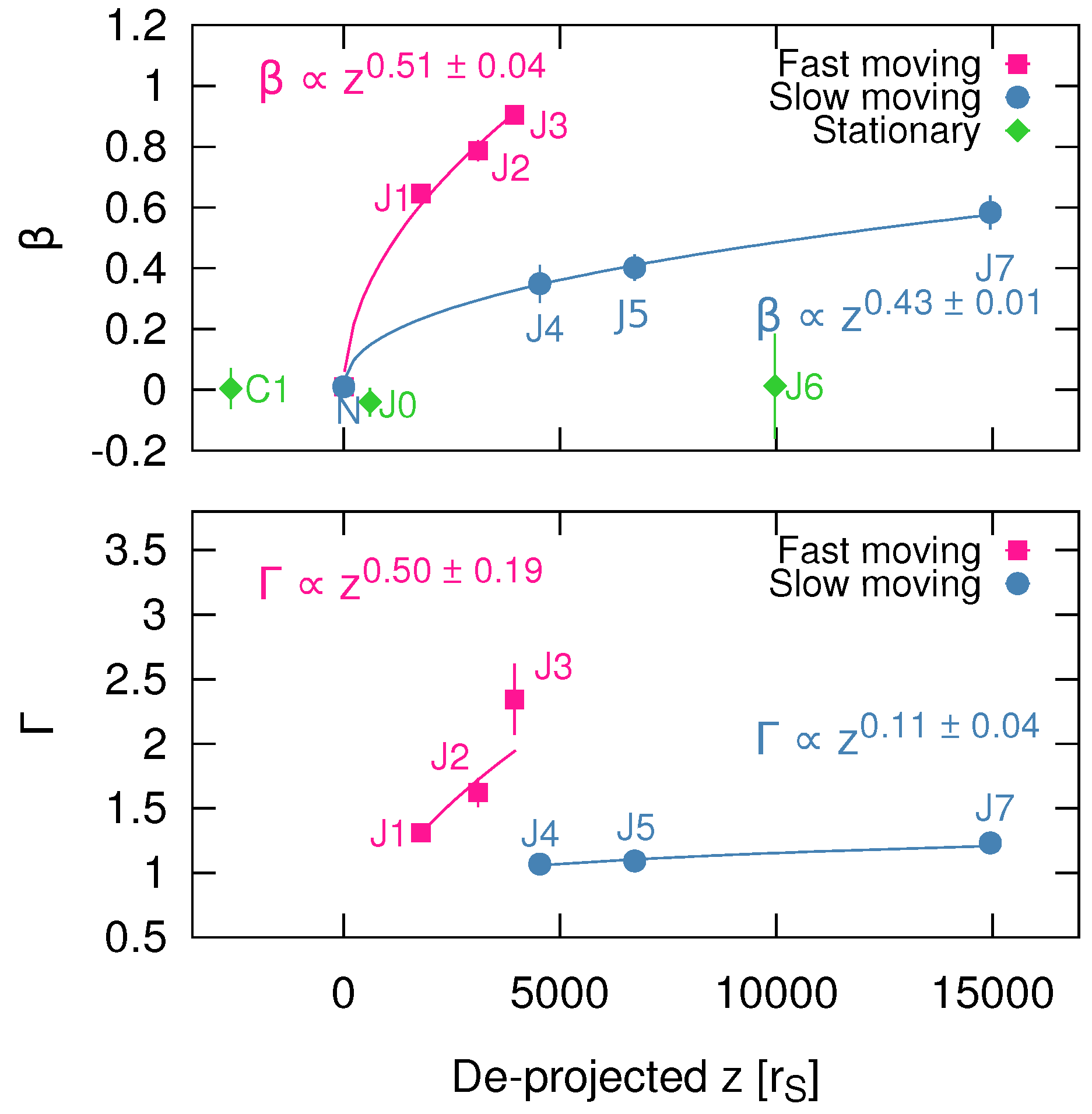

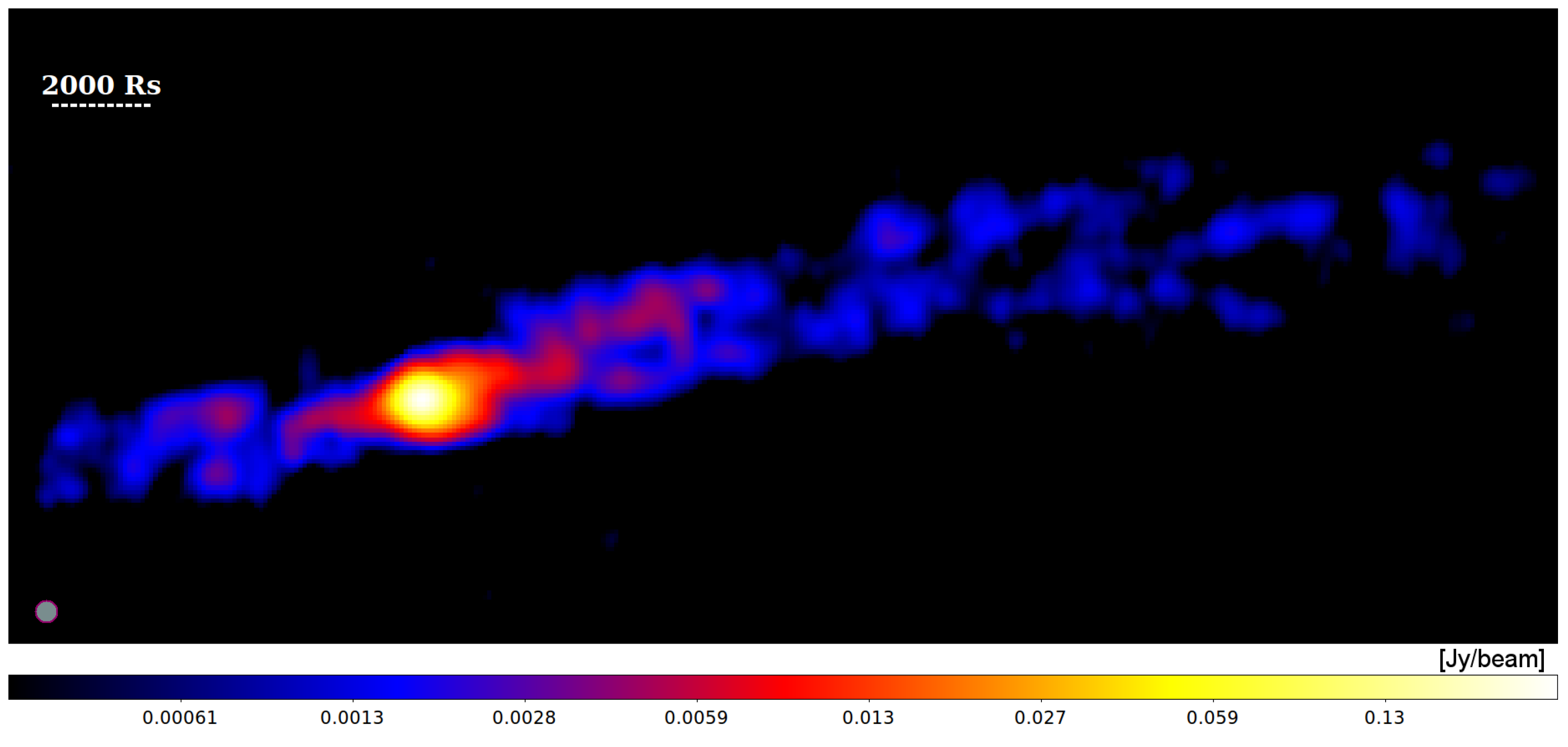
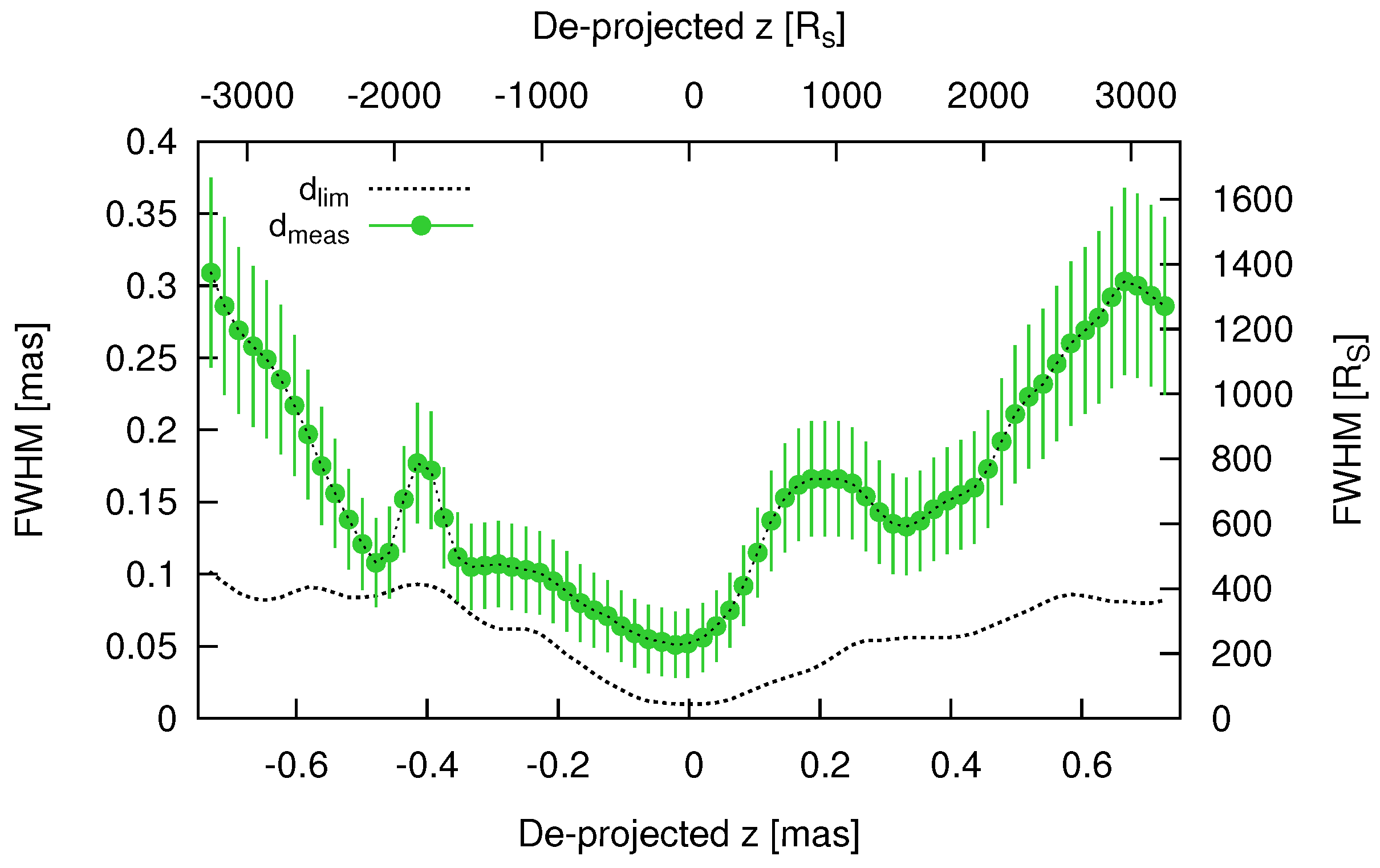
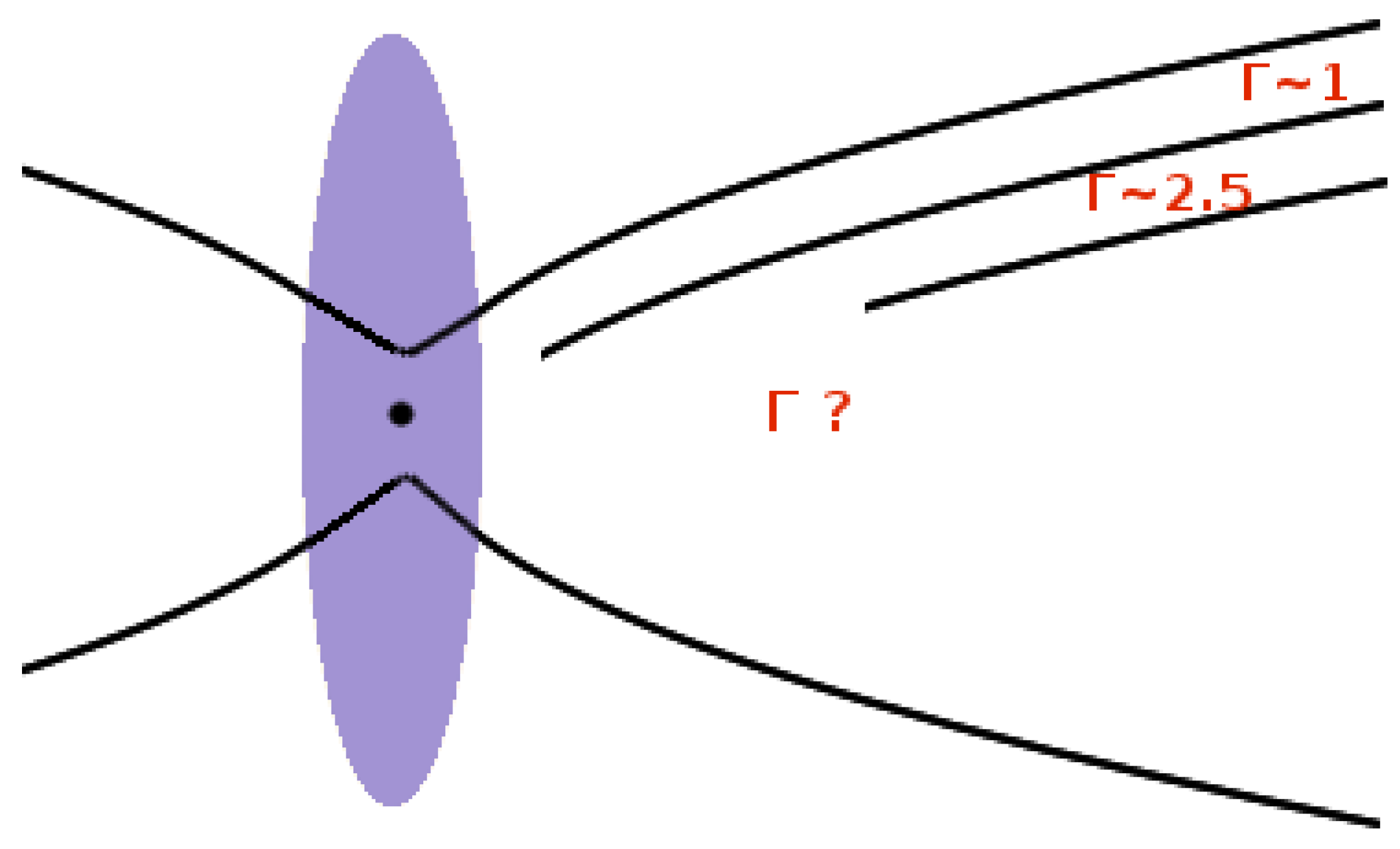
© 2017 by the authors. Licensee MDPI, Basel, Switzerland. This article is an open access article distributed under the terms and conditions of the Creative Commons Attribution (CC BY) license (http://creativecommons.org/licenses/by/4.0/).
Share and Cite
Boccardi, B.; Krichbaum, T.P.; Bach, U. The Disk-Driven Jet of Cygnus A. Galaxies 2017, 5, 22. https://doi.org/10.3390/galaxies5020022
Boccardi B, Krichbaum TP, Bach U. The Disk-Driven Jet of Cygnus A. Galaxies. 2017; 5(2):22. https://doi.org/10.3390/galaxies5020022
Chicago/Turabian StyleBoccardi, Bia, Thomas P. Krichbaum, and Uwe Bach. 2017. "The Disk-Driven Jet of Cygnus A" Galaxies 5, no. 2: 22. https://doi.org/10.3390/galaxies5020022





